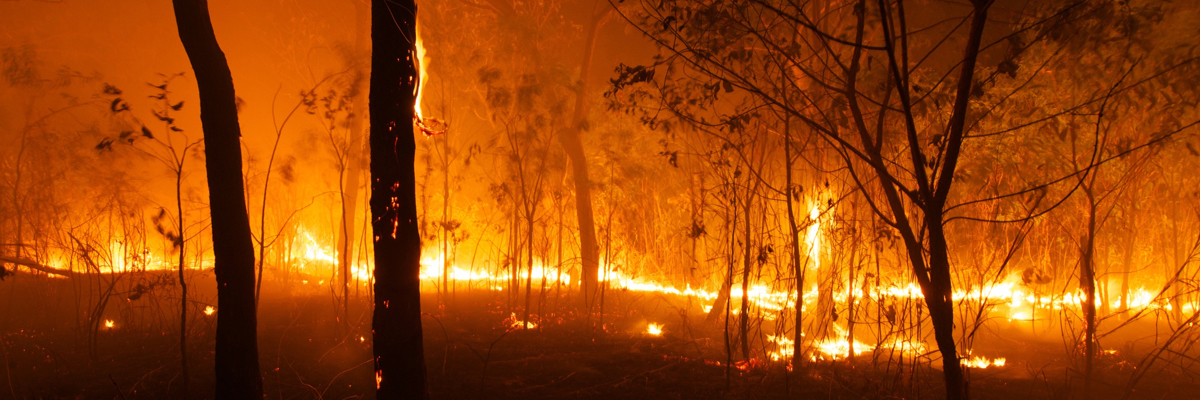From Assessment to Activity: Utilizing Your BAL Report to Minimize Bushfire Ris
From Assessment to Activity: Utilizing Your BAL Report to Minimize Bushfire Ris
Blog Article
Exactly How BAL Report Impacts Shrub Fire Protection Actions
In the realm of bush fire security, the Structure Attack Level (BAL) record stands as a critical tool that substantially influences the security and strength of buildings in fire-prone areas - BAL Report. The effect of a BAL analysis extends far past mere paperwork; it functions as the cornerstone for identifying the ideal building and construction standards and fire security steps needed to alleviate the threats postured by bushfires. As areas face significantly extreme fire periods, recognizing just how the BAL record forms these protective measures ends up being extremely important for policymakers, home owners, and building contractors alike
Comprehending the Bushfire Assault Level

Importance of BAL Report Assessment

In Addition, the BAL report evaluation acts as a fundamental action in following lawful commitments and needs connected to bushfire protection. Local councils and authorities typically mandate the entry of a BAL record as component of the preparation and building approval process to ensure that properties are effectively guarded versus bushfire dangers. Stopping working to perform a complete BAL report assessment can lead to inadequate security actions, leaving residential or commercial properties vulnerable to devastating bushfire incidents.
Building And Construction Requirements Based Upon BAL
A detailed understanding of the Bushfire Assault Level (BAL) enables homeowner to execute construction criteria customized to their particular risk account. Building and construction requirements based on BAL are crucial in mitigating the influence of bushfires on buildings. The BAL score categorizes the possible danger a home deals with during a bushfire on a scale from BAL-Low to BAL-FZ (Fire Zone) Each BAL degree matches to particular building and construction demands outlined in the Australian Typical AS3959-2018 Building of Buildings in Bushfire-Prone Areas. Buildings identified as BAL-Low might just require standard steps such as removing particles and a knockout post keeping gardens, while those in higher BAL classifications require more robust procedures Look At This like coal screens, fire-resistant products, and secured home windows. Following these building requirements not just boosts the structural durability of the residential or commercial property however likewise boosts the total safety of locals during a bushfire event. Consequently, homeowner have to carefully consider their BAL score and abide with the corresponding construction requirements to sufficiently safeguard their homes and passengers.
Executing Fire Defense Procedures
With the structure of building and construction standards based on Bushfire Assault Level (BAL) in area, the emphasis now changes in the direction of the useful implementation of fire security measures to strengthen properties versus bushfire risks. Carrying out fire protection actions includes a mix of passive and active approaches to enhance the strength of buildings in bushfire-prone areas. Easy steps consist of using fireproof structure materials, mounting ember guards on vents, sealing voids in walls and roofings, and keeping a clear space around the home without flammable plants. Energetic measures include having firefighting tools readily available, such as pipes and water pumps, as well as producing a defendable room around the residential or commercial property by getting rid of vegetation and having a well-kept yard. In addition, establishing a discharge strategy and guaranteeing all homeowners recognize emergency situation treatments are important parts of efficient fire security actions. By integrating both passive and energetic strategies, residential or commercial properties can dramatically decrease their susceptability to bushfire occurrences and enhance the safety and security of residents.
Shielding Houses Against Bushfires
Successfully securing homes against the destructive influences of bushfires calls for visit this web-site a proactive and comprehensive strategy to fire defense procedures. Additionally, sealing vents and voids to stop cinder intrusion, as well as incorporating fireproof doors and home windows, can help fortify the home's protection against bushfires. By embracing an aggressive stance and integrating these safety actions, house owners can considerably increase their opportunities of protecting their homes versus bushfires.
Final Thought
In conclusion, the Bushfire Assault Degree (BAL) record plays an important duty in determining the required defense actions against bushfires. Executing fire defense actions based on the BAL report is vital in guarding residential or commercial properties from prospective bushfire hazards.
In assessing bushfire risk to homes, recognizing the Bushfire Strike Level (BAL) is an important element for carrying out reliable defense actions. Overall, a clear understanding of the Bushfire Attack Degree is essential for implementing adequate protection measures and mitigating the impact of bushfires on residential or commercial properties.

Report this page